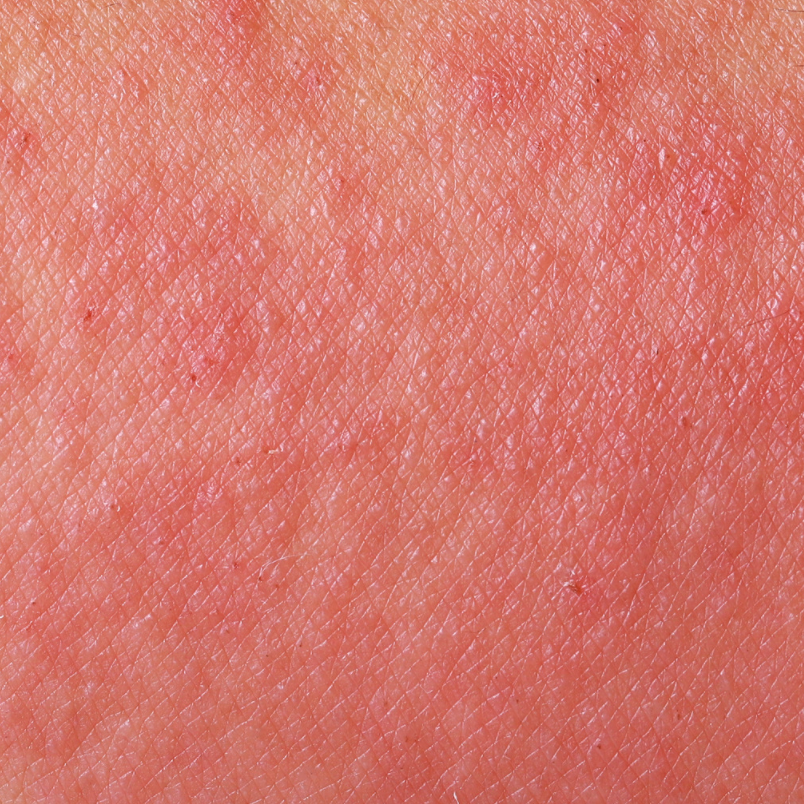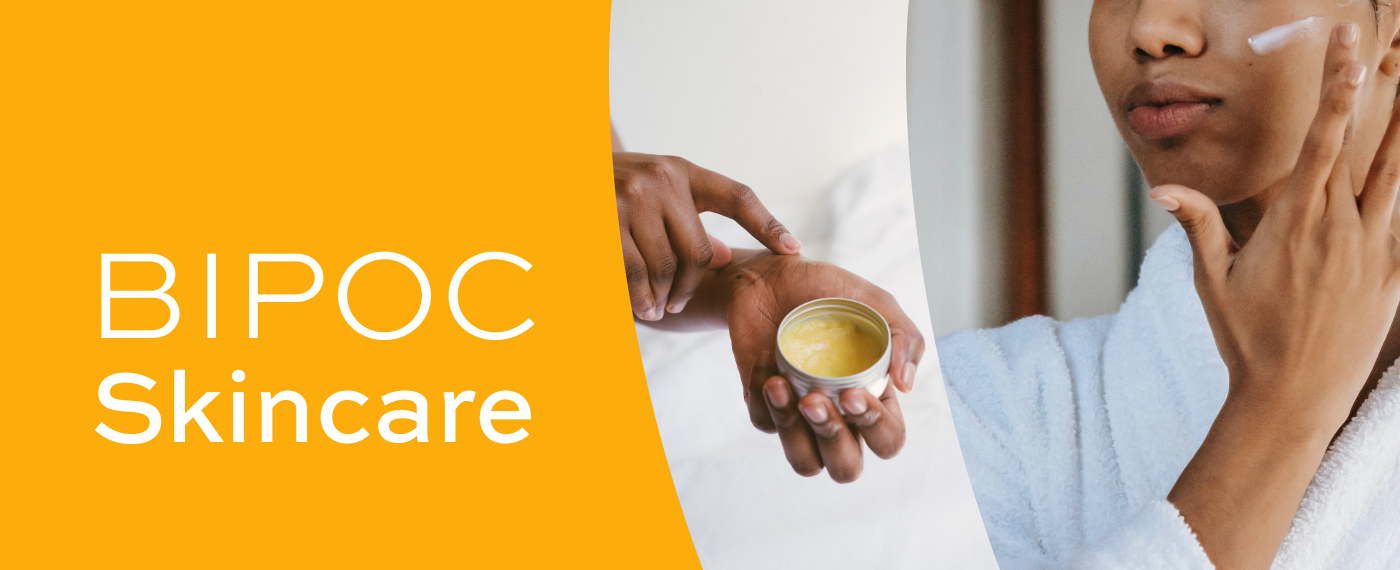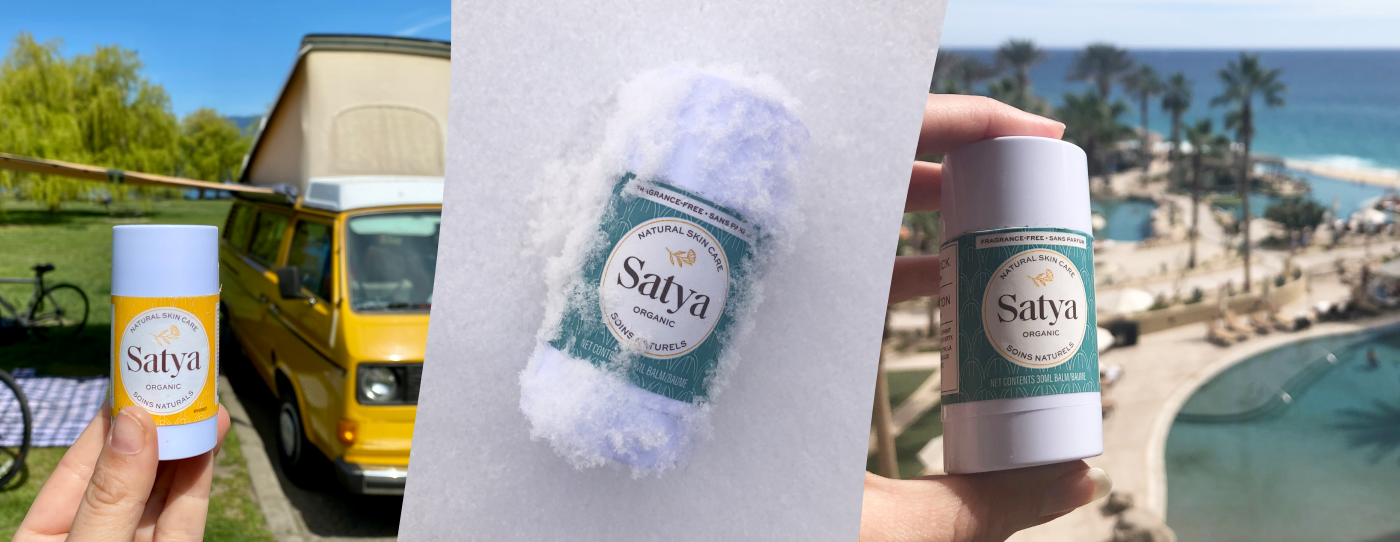Breaking Down The 7 Types of Eczema
If you've identified some common symptoms of eczema on your skin (rash or patches of skin that are itchy, inflamed, and sometimes discoloured), it's helpful to take a closer look at what specific type of eczema you have to guide you down the right path of treatment.
Did you know that there are seven different types of eczema? Keep reading for a breakdown of each type of eczema, how they look like, and how you can identify each type with some common symptoms and causes.
Disclaimer: Research is no substitute for seeing a doctor, so if you believe you have eczema, be sure to get a proper diagnosis from your physician.
1. Atopic Dermatitis 
What Is Atopic Dermatitis?
Atopic dermatitis is the most commonly diagnosed form of eczema. It is a chronic inflammatory condition, related to an overactive immune system response.
Atopic dermatitis is part of what doctors call the “atopic triad,” along with asthma and hay fever. Many people who experience atopic dermatitis have all three conditions.
Many people develop atopic dermatitis as infants or children, and grow out of the condition by adulthood! In particular, babies tend to develop rashes on their cheeks and scalps.
Common Symptoms of Atopic Dermatitis
- Rashes often form in the creases of your elbows or knees (think of spots where friction occurs from creasing skin)
- The skin in areas where the rash appears may turn lighter or darker, or even get thicker or “rougher” in appearance
- Small bumps may appear, which leak fluid or “crust over” if scratched
Causes of Atopic Dermatitis
Atopic dermatitis is likely caused by a combination of factors including:
- Genetics
- Dry skin
- An immune system or autoimmune disorder
- Environmental triggers (e.g. exposure to allergens)
How to Treat Atopic Dermatitis
Atopic dermatitis is a chronic, inflammatory type of eczema characterized by a dysfunction in the skin barrier. This means that your skin has difficulty retaining and storing moisture due to genetics, environmental factors, or an internal health issue. Often times, food sensitivities, poor diet, yeast, toxins, and an imbalanced microbiome can contribute to a gut imbalance or autoimmune condition that will manifest as eczema on the skin. Consult with a trusted healthcare professional or dermatologist to discuss short and long-term treatment plans best suited for your lifestyle.
Atopic dermatitis can be incredibly frustrating, uncomfortable, and extremely itchy! To expedite skin healing as you address internal health symptoms, consider adding a skin-loving salve into your routine. Our handy Eczema Relief Glide Stick is an easy-to-apply solution for eczema and all forms of dry, itchy, and irritated skin.
2. Contact Dermatitis
What Is Contact Dermatitis?
Contact dermatitis occurs when you touch a substance that irritates your skin or causes an allergic reaction. There are two types:
- Allergic Contact Dermatitis: An immune system reaction to an allergen, like latex or pollen.
- Irritant Contact Dermatitis: Occurs when a chemical or other substance irritates your skin.
Common Symptoms of Contact Dermatitis
- Red, itching, burning and stinging skin
- Itchy bumps called hives may pop up in affected areas
- Fluid-filled blisters may form on the skin, which ooze liquid and crust over
- Over time, the skin may thicken and feel scaly or leathery to the touch
Common Causes of Contact Dermatitis
Some of the most common causes of contact dermatitis are:
- Detergents
- Bleach
- Jewellery (particularly jewelry made with nickel)
- Synthetic fabrics
- Skincare & cosmetics
- Soap
- Hair dye
- Perfumes & fragrance
- Latex
- Paint
- Solvents
- Adhesives
- Poison ivy and other poisonous plants
- Tobacco smoke
How to Treat Contact Dermatitis
For contact dermatitis, the best thing to do is identify the culprit and remove it. This can be a painstaking process! Start with the hot-ticket items on the list above, and work from there.
Soothe and heal irritated skin with a natural salve or balm to promote healing and discourage scratching, which can lead to scarring!
3. Neurodermatitis
What Is Neurodermatitis?
Neurodermatitis is a chronic, inflammatory type of eczema similar to atopic dermatitis that often appears at the creases of elbows or knees. It tends to flare up periodically and then quiet down, sometimes for years. Allergies and emotional stressors may trigger an outbreak.
Those with other types of eczema or psoriasis may be at an increased risk of developing neurodermatitis.
Common Symptoms of Neurodermatitis
- Thick, scaly patches form on the arms, back of the neck, scalp, bottoms of the feet, backs of the hands, or genitals
- Skin patches that can be very itchy, especially when you’re relaxed or asleep
Common Causes of Neurodermatitis
Some of the most common causes of neurodermatitis is:
- Irritants
- Allergens
- Synthetic fabric
- Bug bites
- Atopic dermatitis
How to Treat Neurodermatitis
Similar to atopic dermatitis, neurodermatitis is best treated by reducing contact with irritants and allergens, applying a healing salve to restore the skin’s moisture barrier, and avoiding scratching!
To calm irritated skin before bed, try a soothing Oat Bath! Formulated with colloidal oatmeal and organic calendula blossoms, a soak in a natural oat bath is great for the soothing dry, sensitive and itchy skin.
4. Dyshidrotic Eczema

What is Dyshidrotic Eczema?
Dyshidrotic eczema appears as small, itchy, fluid-filled blisters on the finger, palms, toes, and soles of the feet. It is more common in women than men.
Common Symptoms of Dyshidrotic Eczema
- Fluid-filled blisters form on the fingers, toes, palms, and soles of the feet
- Blisters may itch or hurt
- Skin may also scale, crack, or flake
Common Causes of Dyshidrotic Eczema
- Allergies
- Damp hands and feet
- Exposure to substances such as nickel, cobalt, or chromium salt
- Stress
How to Treat Dyshidrotic Eczema
Stress exacerbates any inflammatory condition. Do your best to keep stress down (easier said than done these days!), and treat symptoms with cool compresses and applying a natural skin protectant or thick moisturizer afterwards. Reduce scratching and see a professional dermatologist to safely drain the blisters if you experience severe pain.
5. Nummular or Discoid Dermatitis
What Is Nummular Dermatitis?
Nummular (Latin for “coin”) or discoid dermatitis looks different from other types of eczema. It features itchy, coin-shaped spots that can be triggered by environmental triggers. dry skin, insect bites, scrapes, chemical burns, or reactions to inflammation.
You can also be more likely to experience nummular eczema if you have another type of eczema, such as atopic dermatitis.
Common Symptoms of Nummular Dermatitis
- Scattered, well-defined coin shaped rashes
- Patches may be scaly, intensely itchy, and sometimes oozing
Common Causes of Nummular Dermatitis
- Temperature changes
- Dry climate
- Stress
- Environmental irritants
- Bug bites
How to Treat Nummular Dermatitis
Nummular dermatitis can look like a case or ringworm (and vice versa), so be sure to rule out a fungal infection! Treat symptoms as they arise with a natural, topical anti-inflammatory like the Eczema Relief Glide Stick. This soothing, steroid-free balm uses a twist stick applicator that's perfect for mess-free application on the go, and works great for small areas.
6. Seborrheic Dermatitis

What Is Seborrheic Dermatitis?
Seborrheic dermatitis is a chronic rash condition that appears near oil-producing glands on the body.
Common Symptoms of Seborrheic Dermatitis
- Yellow flakes, greasy scales, and reddened, irritated skin on the upper back, nose, scalp, or chest
Common Causes of Seborrheic Dermatitis
Experts don’t know exactly what causes seborrheic dermatitis, but a list of factors include:
- Stress
- Genetics
- Certain medical conditions and medicines
- Cold, dry weather
- Hormone imbalance
- Immune system response
How to Treat Seborrheic Dermatitis
If you are experiencing this type of eczema, consider seeking a consultation with an endocrinologist or naturopath specializing in hormone regulation!
7. Stasis or Gravitational Dermatitis

What Is Stasis Dermatitis?
Stasis dermatitis is lower body inflammation caused by weakened veins and poor circulation under the skin. It most commonly occurs when fluid leaks out of weakened veins into your skin, causing swelling, redness, itching, and pain.
Common Symptoms of Stasis Dermatitis
- Dry, itchy skin around legs and tops of feet
- Lower legs may swell up, especially during the day or following physical activity
- Legs may ache or feel heavy
- Thick, ropey, damaged veins called varicose veins are commonly found in the legs; skin covering those varicose veins may be dry and itchy
- In extreme cases, open sores may develop on the lower legs or the tops of the feet
Common Causes of Stasis Dermatitis
Stasis dermatitis affects people who have blood flow problems in their lower legs. When the valves that normally push blood up through your legs toward your heart malfunction, blood can pool in your legs, causing swelling, pressure, and discomfort.
How to Treat Stasis Dermatitis
If you are experiencing stasis dermatitis, be sure to let your dermatologist or primary care physician know, and keep your whole wellness team in the loop!
---
Was this helpful?
It's possible to have more than one type of eczema present on your skin at one time. Eczema also presents differently on different skin pigments and textures. If you're still unclear about what type of eczema you may be experiencing, it's always best to consult with a healthcare professional you trust that specializes in eczema to provide you with the proper diagnosis and treatment plan.
---
The information provided in or through this blog post is for educational and informational purposes only. Information provided on Satya.ca is not intended to be a substitute for professional medical advice or mental health advice
Always seek the advice of your own Medical Provider and/or Mental Health Provider regarding any questions or concerns you have about eczema or specific skin conditions.






